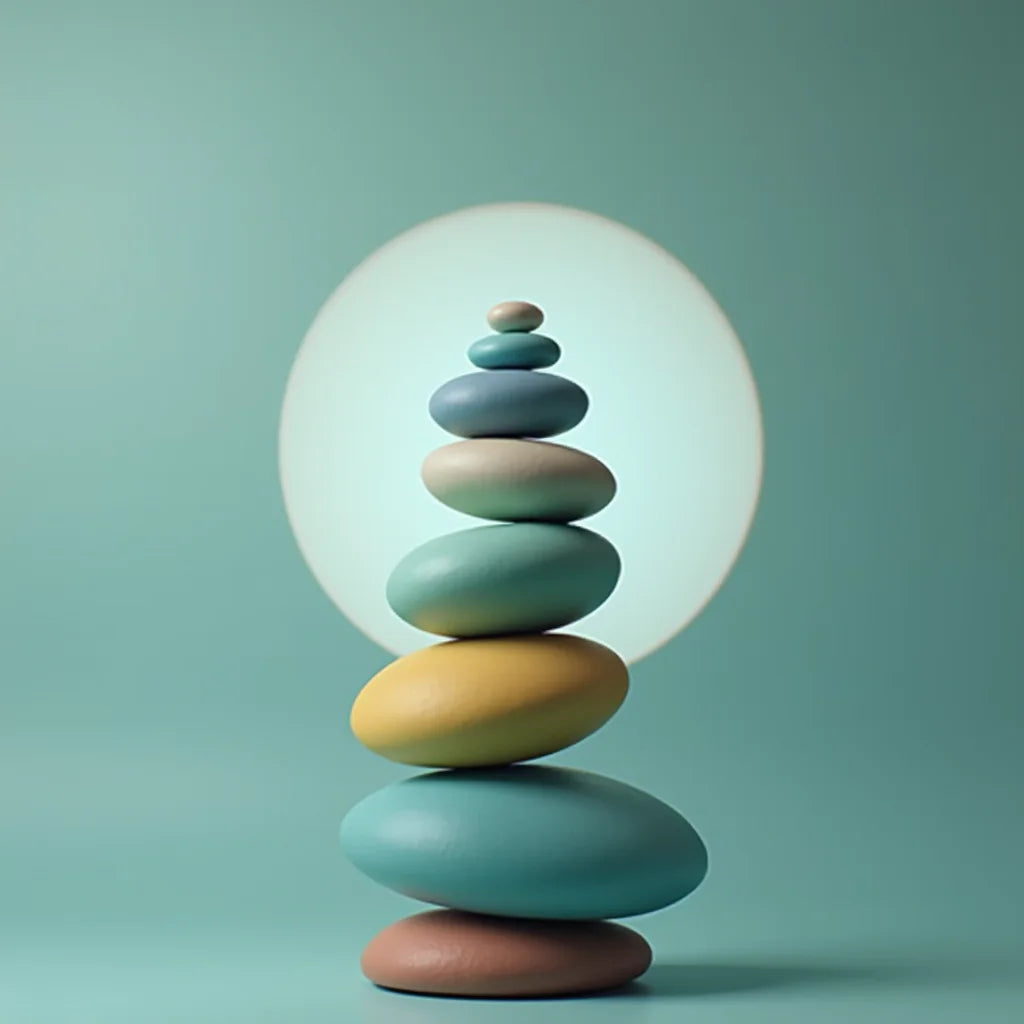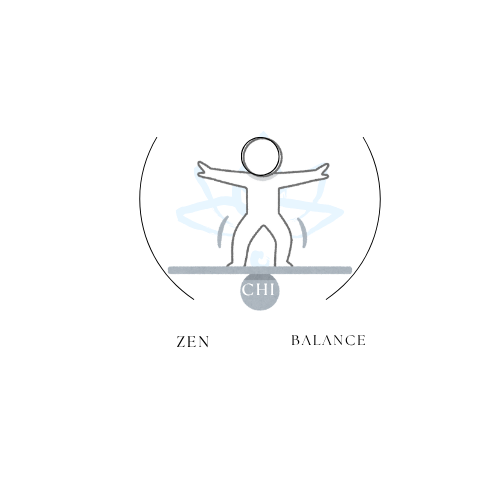
What Drains Your Inner Balance and How to Refill It
Aktie
Updated on: 2025-10-24
Table of Contents
- A calm introduction to inner balance
- Product Spotlight: A gentle toolkit for inner balance
- Features that support steady inner balance
- A kind way to use your inner balance toolkit
- Myths vs. Facts about inner balance
- Frequently Asked Questions on inner balance
- How can I restore my inner balance when feeling overwhelmed?
- What daily habits help maintain inner balance?
- How does mindfulness strengthen inner balance?
- What are the best meditation techniques for inner balance?
- How do I stay consistent with inner balance routines?
- Final recommendations for steady inner balance
Inner balance is a gentle state of steadiness that helps you meet the day with clarity and care. If you are seeking inner harmony and emotional balance, you may appreciate a simple, supportive approach rather than a strict plan. This guide offers practical steps for how to cultivate inner balance in daily life in a way that respects your pace. You will find mindfulness ideas, stress management strategies, and a small routine that can help you feel more centered without pressure.
Product Spotlight: A gentle toolkit for inner balance
A dedicated, thoughtfully designed toolkit can make inner balance feel more tangible. Many people enjoy a small set of items they can return to when they want to reset: a guided journal, a calm-breathing card, and a soft reminder to pause. These tools do not promise quick fixes. Instead, they create a steady rhythm—one that invites awareness, reflection, and kind action.
If you would like to explore supportive wellness tools, you may find a helpful selection by browsing All products. A clear, well-organized collection can make it easier to choose gentle aids that suit your personal routine.
Features that support steady inner balance
- Plain-language prompts that encourage self-reflection without judgment, supporting emotional balance from day to day.
- Simple, one-page routines that keep things light and doable—ideal for mindful mornings or calming evening reviews.
- Compact, portable elements (like a mini breathing card) so you can restore inner balance during short breaks.
- Soft, neutral design that reduces distraction, helping you return to inner harmony with fewer decisions.
- Flexible layouts you can use for gratitude notes, gentle planning, or mindful intention setting.
A kind way to use your inner balance toolkit
Consider a short daily touchpoint rather than a long session. For example, in the morning, you might notice one feeling, name one value you want to honor, and choose one small step. In the evening, you could jot down a gentle win, a moment of presence, or a person you appreciated. This steady rhythm is a supportive form of mindfulness and stress management—it invites calm without forcing it.
As you explore practices and tools, you can always learn more about the brand’s approach through the About page. If you have specific questions, you are welcome to reach out through the Contact page for courteous support.
Myths vs. Facts about inner balance
Myth: Inner balance means feeling calm all the time
Fact: Inner balance does not require constant calm. It is about meeting changing moods with awareness and kindness. You are still balanced even when you feel busy or tender; the difference is that you notice your state, accept it, and respond with care.
Myth: Achieving inner harmony demands complicated routines
Fact: Gentle consistency matters more than complexity. A few small habits practiced regularly—such as a mindful breath before meetings or a short evening reflection—can support emotional balance without taking much time.
Myth: You must meditate for a long time to see benefits
Fact: Short, focused moments of attention can be helpful. Many people appreciate brief practices, such as three calming breaths, labeling a feeling, or noticing five senses. These tiny practices can restore inner balance during everyday transitions.
Frequently Asked Questions on inner balance
How can I restore my inner balance when feeling overwhelmed?
It may help to slow the moment before trying to solve the entire day. Consider a gentle “pause ritual” that you can use anywhere: feel your feet on the floor, soften your shoulders, exhale a little longer than you inhale, and name one kind next step. This resets your attention so you can move forward with steadier energy. If it feels supportive, keep a small reminder card in your bag or desk for quick access.
What daily habits help maintain inner balance?
Many people find value in a short morning intention, one mid-day breath break, and a brief evening check-in. The morning intention sets direction, the breath break brings you back to the present, and the evening check-in closes the loop with appreciation. These modest habits protect inner harmony by lowering decision fatigue and creating a friendly rhythm.
How does mindfulness strengthen inner balance?
Mindfulness trains gentle attention. When you notice thoughts and feelings without rushing to fix or judge them, you create space for wise choices. This calm awareness supports emotional balance because it reduces reactivity and invites thoughtful responses. Even a minute of noticing your breath can guide you back to yourself.
What are the best meditation techniques for inner balance?
The best meditation techniques for inner balance are usually the ones you can sustain. Many people appreciate breath-focused practice, body scan, or loving-kindness phrases. Try a few formats and keep the one that feels kind and simple. Short, consistent sessions—such as two to five minutes—often work well for busy days.
How do I stay consistent with inner balance routines?
It may be easier to attach small practices to existing habits. For example, sit for three calm breaths after you close your email or add a one-line reflection right after brushing your teeth. Stable anchors turn good intentions into repeatable actions.
Final recommendations for steady inner balance
A small daily rhythm for inner balance
Choose one morning prompt, one mid-day pause, and one evening reflection. Keep each to one minute. This simple rhythm is a kind way to cultivate inner balance in daily life without adding pressure. If you miss a day, you can return the next day without self-criticism.
- Morning: Name one value to honor today (for example, patience or clarity).
- Mid-day: Take three quiet breaths and relax your jaw.
- Evening: Acknowledge one small win, even if it is as simple as drinking water.
Mindful moments that travel with you
Short, portable practices can support inner harmony during transitions. Try counting five things you can see, four you can feel, three you can hear, two you can smell, and one you can taste. Or try labeling your current feeling with one word. These micro-moments encourage a calm return to the present.
Gentle stress management supports
When tasks stack up, it can feel hard to stay centered. To reduce overwhelm, write a tiny “must-do” list with no more than three items. Then, complete them one at a time, using a brief breath before you switch tasks. This helps your attention reset and supports emotional balance throughout your day.
Meditation tips you can keep
It may be helpful to experiment with a few approaches. You might focus on your breath, scan your body from head to toe, or repeat a kind phrase such as “May I meet this moment with care.” Choose what feels easy to return to. The best meditation techniques for inner balance are the ones that invite you back with warmth.
Friendly tools to reinforce your routine
Consider keeping a small, dedicated space for your practice—a corner with a soft cushion or a tidy notebook. Gentle structure reduces friction and makes it easier to begin. If you would like product support, you can explore thoughtful options on the Home page or browse a curated range via All products. If you prefer to learn more about the story and approach behind the tools, the About page offers helpful context. For questions, please reach out through Contact; a supportive reply is always the aim.

I'm a passionate curator at Zen Chi Balance, dedicated to spreading calm, harmony, and mindful living through faith-inspired lifestyle products. I help craft meaningful experiences for our global community of mindful shoppers.
The content provided is for informational and inspirational purposes only. It is intended to encourage personal growth, mindfulness, and balance in daily life. Zen Chi Balance does not provide medical, legal, or professional advice. For specific concerns or guidance, please consult a qualified professional. Visit us at www.zenchibalance.com for more inspiration and resources.
